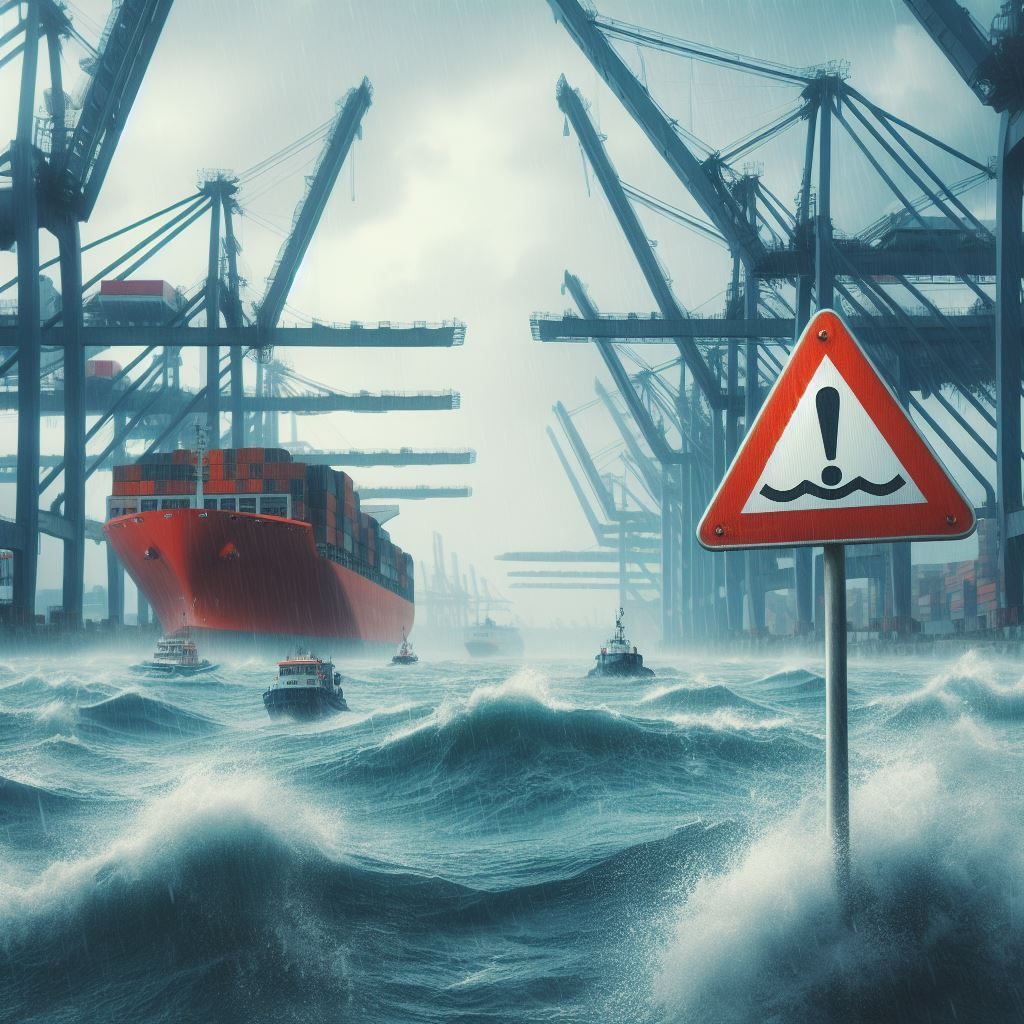Shipping Alert! Delays on Imports from Asia & Freight Rate Increase Conditions
If you’re importing from Asia right now, there’s a high chance you’re experiencing or about to experience delays in getting your cargo. It’s likely an increase in shipping costs is hitting this month too, not only in costly delays but also an increase in freight rates.
Bad Weather at Asian Ports
Two weeks ago, some major carriers issued warnings of bad weather causing delays of up to a week for vessels at key Asian ports. For many importers, that means cargo that was supposed to arrive at U.S. ports this week has not.

The Journal of Commerce (JOC) actually issued an email warning on Tuesday about the bad weather causing week-long delays. While it seems that email alert was issued more to promote the JOC’s library of shipping charts, they are a useful tool and show congestion as still a concern in Asia. At the Port of Ningbo, congestion spiked in late April and has been coming down in the weeks since. However, the Port of Shanghai has congestion still rising right now, despite a couple weeks passing since the bad weather really slowed the Asian ports.
It was April 26th when Keith Wallis reported the following in the Journal of Commerce:
Bad weather and resulting congestion at ports in Asia are causing vessel delays of up to a week at key gateways in the region, carriers say.
Hapag-Lloyd said fog is the main problem at ports in China, including Shanghai and Ningbo, while torrential rain and poor visibility were issues in Malaysia and Singapore. An index measuring wait times in harbor, produced by Portcast, shows congestion in Ningbo began rising mid-April.
The adverse conditions meant vessels could not berth even as more ships arrived at anchorage, leading to vessel bunching that exacerbated port congestion. Yard congestion in Singapore also contributed to the delays there, Hapag-Lloyd said in an advisory Thursday.
The delays come on top of the extra 10- to 14-day transit carriers face due to diverting vessels around southern Africa to avoid the risk of attack in the Red Sea region.
One of the worst-affected facilities is the Shanghai East Container Terminal, where there are delays of up to seven days, Maersk said in an advisory this week. Other terminals in Shanghai are seeing delays of up to three days, while Ningbo and Qingdao in eastern and northern China are reporting similar delays, Maersk added.
Hapag-Lloyd said vessels are having to wait up to 80 hours to berth at Port Klang and 72 hours in Singapore.
Ocean Network Express (ONE) confirmed that some ships operating trans-Pacific and intra-Asia services are having sailing schedules disrupted by the bad weather and port congestion.
Highlighting the delays, ONE sailing schedules show the 10,000-TEU Seaspan Bellweather, operating the Asia-Latin America Express 3 service, was two days late at Ningbo. That lengthened to three days when the vessel berthed at Shanghai and then five days when the vessel arrived at the next call, Qingdao, this week. ONE attributed the delays to berth congestion at all three ports.
Vessel delays at major shipping gateways often ripple through supply chains around the world. We will see how much that happens with these current shipping delays out of Asia.
Conditions for Freight Rate Increases
General retailer overstock – caused by the shipping boom followed by struggling economies and high inflation – finally dwindled enough to bring global shipping up to more normal levels, similar to before the pandemic, than we’ve been seeing. That has eaten into the international shipping industry’s excess capacity that was helping it handle the longer routes necessitated by Iran-backed Houthi attacks in the Red Sea and Gulf of Aden. While there’s been a capacity injection in India to U.S. trade routes, many major trade routes, like Asia to U.S. routes, have seen capacity tighten.
That tightened capacity helped create congestion at the ports. However, it was the tighter capacity for shipping goods from Asia paired with bad weather, seen in heavy fog in some ports and heavy rain in others, that really caused the congestion. Pairing that congestion with the tighter capacity, you’re looking at the type of situation that tends to put upward pressure on freight rates. After freight rates came down a little in April, there’s a good chance we’ll be seeing increases here in May.





